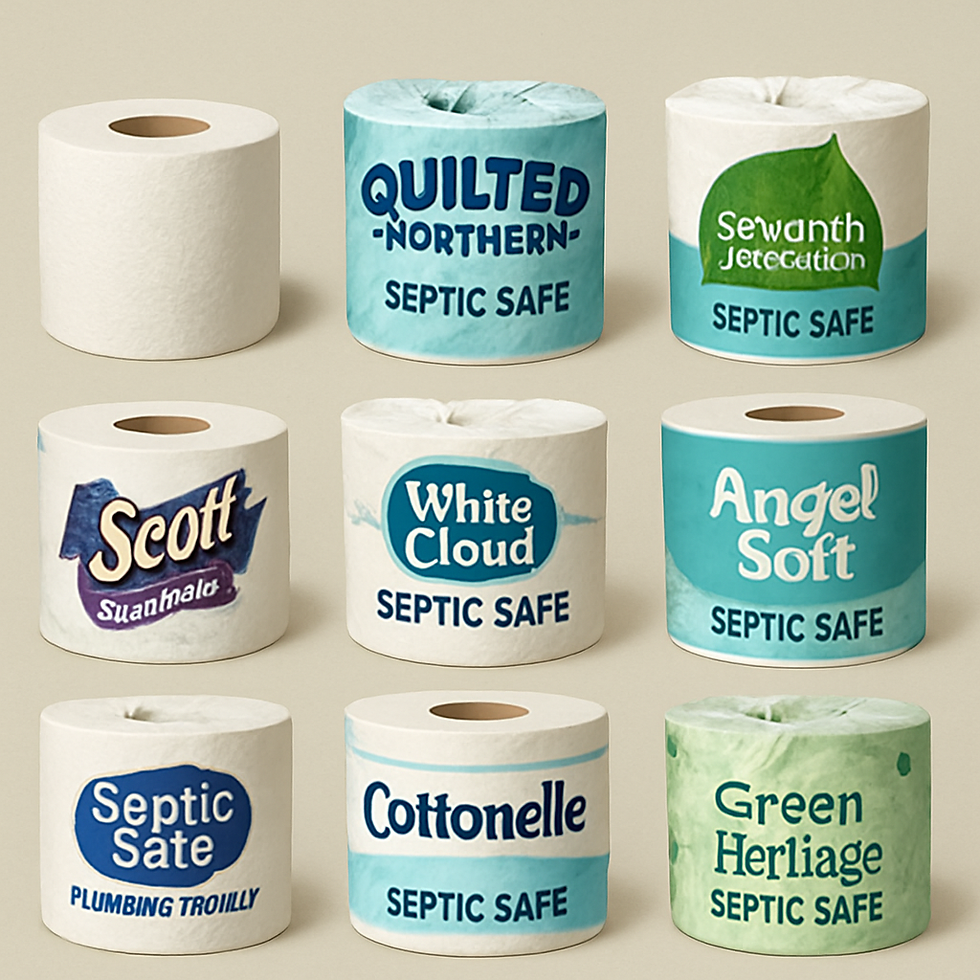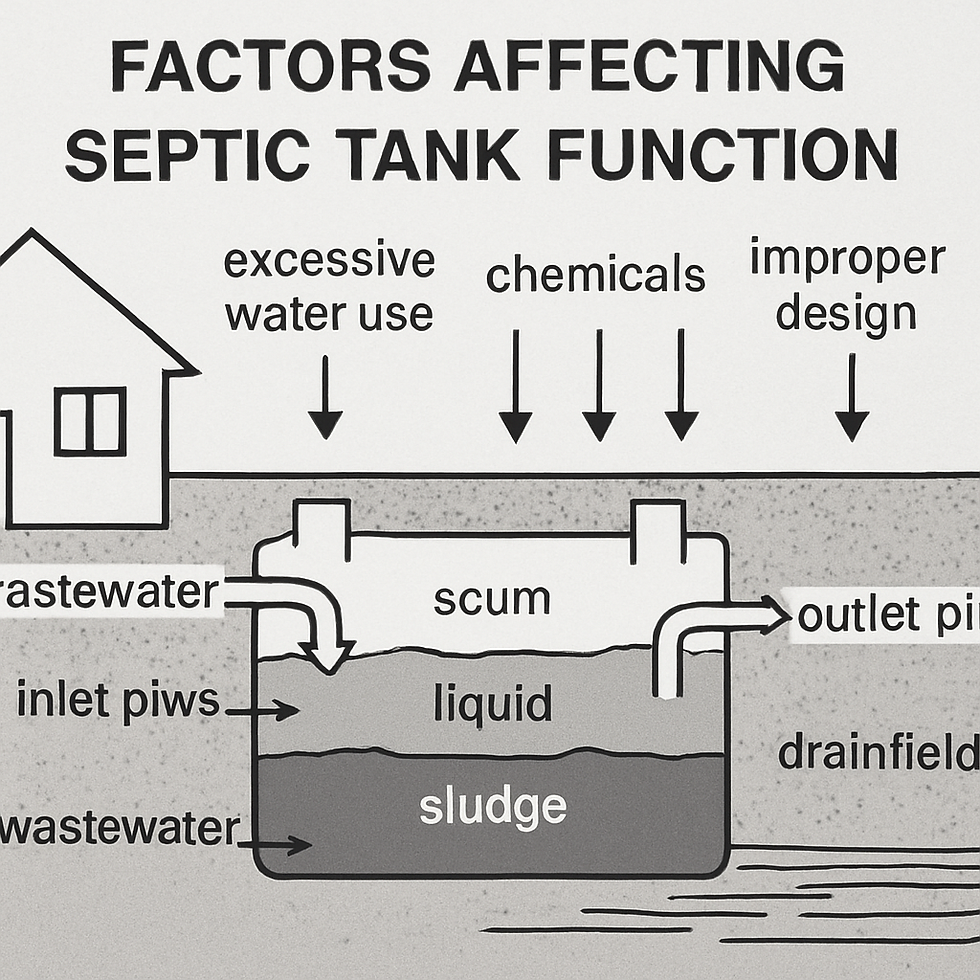Best Toilet Paper for Septic Tanks
- Staff Desk
- Aug 20
- 4 min read
Choosing the right toilet paper for septic tanks is crucial. It can prevent costly plumbing issues. Not all toilet paper is created equal. Septic systems need special care. The wrong toilet paper can cause clogs and backups. This can lead to expensive repairs.
Biodegradable toilet paper is a great option. It breaks down quickly, reducing the risk of clogs. It's also better for the environment. Dissolvable toilet paper is another excellent choice. It dissolves rapidly in water. This helps keep your septic system running smoothly. Look for toilet paper labeled "septic-safe." These products are designed to work well with septic systems. They help maintain system health. Eco-friendly options are available too. These often use recycled materials. They are free from harsh chemicals.
Thickness and ply matter. Single-ply toilet paper dissolves faster. Multi-ply options may not break down as easily.

Choosing the best toilet paper for septic tanks can save money. It also helps the environment. Let's explore the best options available.
Why Septic Tanks Need Special Toilet Paper
Septic tanks play a crucial role in waste management for many homes. They require toilet paper that breaks down easily. This prevents clogs and backups which can be costly. Regular toilet paper might not dissolve quickly enough. This can cause blockages in your septic system. Special septic-safe toilet paper is designed to minimize these issues.
Septic systems work by utilizing bacteria to break down waste. When toilet paper doesn’t decompose quickly, it disrupts this process. Over time, this can lead to system failures. Using the right toilet paper can help maintain the bacteria in your tank. This keeps your entire system working efficiently. It also prolongs the lifespan of your septic tank.
There are several features to look for in toilet paper for septic tanks:
Dissolvability
Biodegradability
Chemical-free materials
Single-ply versus multi-ply options
Choosing toilet paper with these attributes can prevent major problems. It can also lead to fewer maintenance needs and lower costs.

In the long run, septic-safe toilet paper is a smart investment. It keeps both your plumbing and environment healthier. Understanding why certain products are better can guide smarter choices.
How Toilet Paper Affects Septic Systems
Toilet paper can significantly impact the health of a septic system. Septic systems rely on a balance of bacteria to break down waste. Using the wrong type of toilet paper disrupts this delicate balance.
When toilet paper doesn't dissolve quickly, it can accumulate. This creates blockages in pipes and tanks. These blockages can lead to costly repairs or system failures. Certain toilet papers are specifically labeled as septic-safe. These are designed to dissolve more rapidly in water, reducing the risk of clogs. It's crucial to look for this label when purchasing.
Ply count is another important factor. Single-ply paper is typically better for septic systems because it breaks down faster. Multi-ply options, though softer, often take longer to dissolve.
Consider the following when assessing the suitability of toilet paper:
How quickly does it dissolve?
Is it biodegradable?
Does it contain chemicals or additives?
What is the ply count?
Choosing septic-friendly toilet paper helps preserve your system's functionality. This not only protects your investment but also ensures your household runs smoothly. Proper paper selection is an easy step towards maintaining a trouble-free septic system.
Understanding how different toilet papers affect septic systems can save you from future headaches and expenses. Adjusting your paper choice is a small change with a big impact.
Key Features of the Best Toilet Paper for Septic Tanks
Selecting the right toilet paper for septic tanks involves several key features. Dissolvability tops the list. Toilet paper must break down quickly to avoid blockages. Biodegradability is equally important. Products designed to decompose reduce environmental impact. This ensures they don’t linger in the system.
Chemical-free options are preferred. Harsh chemicals can harm beneficial bacteria in septic tanks. Thus, a natural composition is vital for maintaining a healthy system. Ply and thickness matter too. Thicker papers may feel soft but can take longer to dissolve. Single-ply options are typically the safest bet for septic systems.
Additionally, the paper’s texture can influence its breakdown rate. A smoother texture generally aids in quicker dissolvability. Each of these aspects contributes to septic safety. Certifications ensure reliability. Look for reputable labels like FSC or those specifying septic-safe approvals. These provide extra assurance of product claims. Understanding these labels helps make informed choices.
When considering toilet paper, keep these features in mind:
Dissolvability and biodegradability
Absence of chemicals
Appropriate ply and thickness
Reliable certifications
Choosing toilet paper based on these features promotes a healthy septic system. It also reflects an environmentally-conscious decision.

Dissolvability: Why It Matters
Dissolvability is critical for toilet paper used in septic systems. It refers to how quickly the paper breaks down in water. Faster dissolution reduces the risk of clogs and backups.
Several factors influence dissolvability. Ply thickness and the paper’s texture play significant roles. Single-ply and smoother surfaces generally dissolve faster. Testing the rate at home can provide assurance.
When assessing dissolvability, consider these points:
Ply thickness: Single-ply dissolves quicker.
Texture: Smoother papers break down faster.
Test at home: Place a sheet in water to observe.
Selecting a high-dissolvability paper ensures fewer septic issues. It also minimizes maintenance and repair costs. This feature preserves both plumbing health and homeowner peace of mind.



Comments